27 Common Types of Wood Grain Patterns (With Pictures)
-
Pete Ortiz
- Last updated:
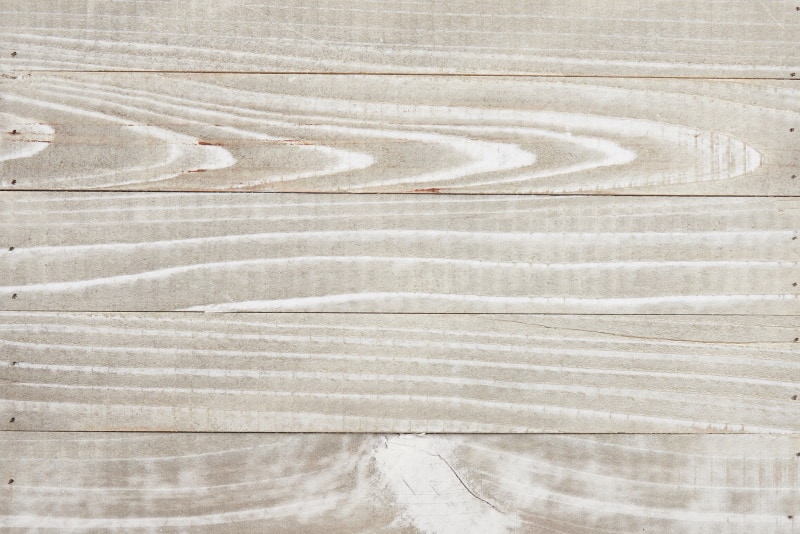
There are hundreds of species of trees on this planet, each with its own unique colors and patterns. Some are sought after for their beauty, and others are prized for their strength. Below, we’ve compiled an extensive list of some of the most common and not-so-common wood grain patterns. Whether you’re interested in getting into woodworking or want to learn more about the trees around you, there’s bound to be something interesting on this list.
The 27 Common Types of Wood Grain Patterns
1. Rosewood
| Genus: | Dalbergia |
| Common Names: | Rosewood, Bahia rosewood, Brazilian rosewood |
| Common Uses: | Guitars, furniture, luxury flooring |
Numerous rosewood species are grown in different areas of the world, and their color can range from red and burgundy to light brown. Rosewood has a pleasant fragrance when cut, and because of the characteristic smell, Rose Mahogany is often incorrectly referred to as a Rosewood due to having a similar scent when cut.
2. Teak
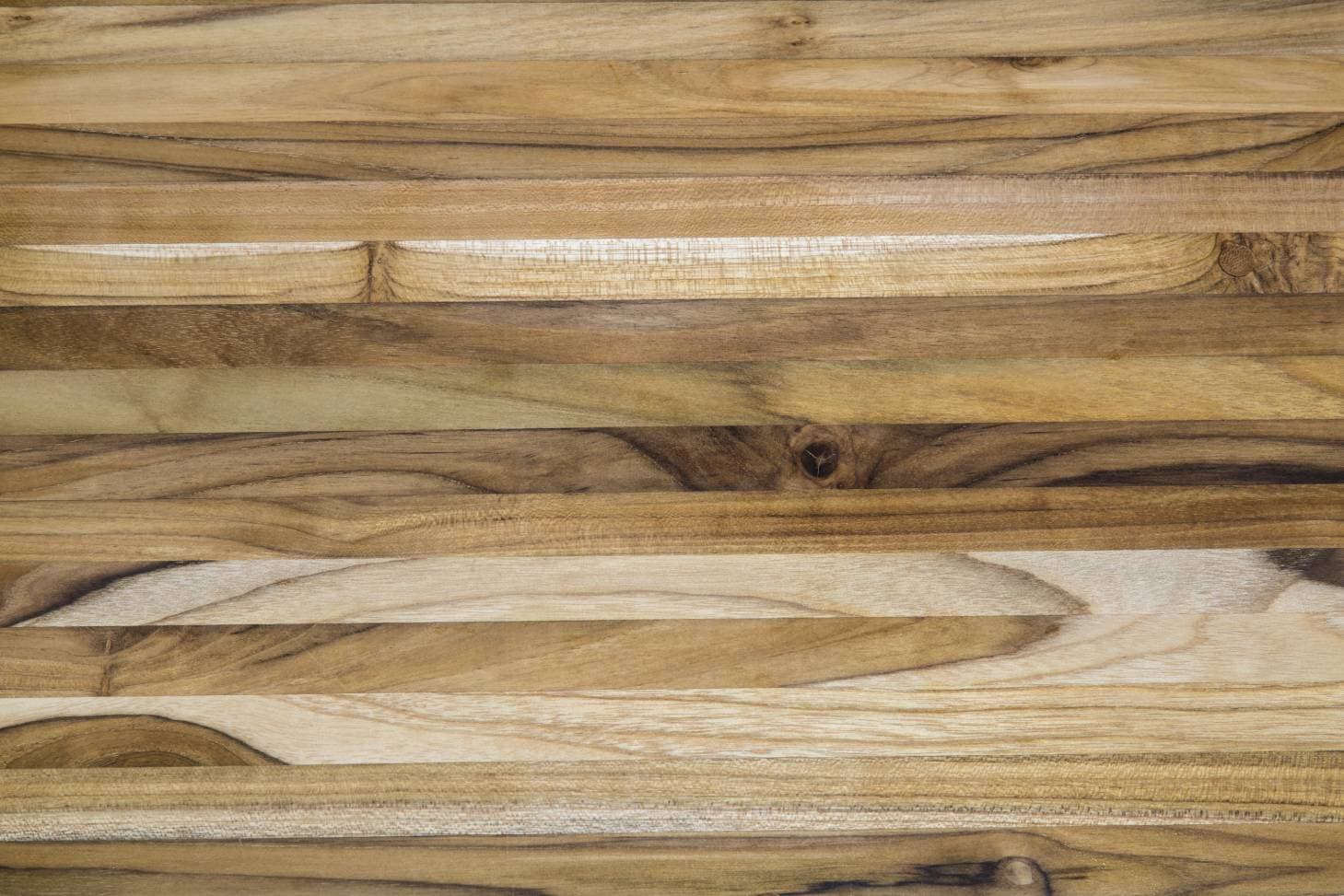
| Genus: | Tectona |
| Common Names: | Teak, Burmese teak |
| Common Uses: | Boat decking, cutting boards, outdoor furniture |
This tropical hardwood is prized for its natural resistance to water. As a result, it’s commonly used in boat decks and other outdoor applications such as furniture, carvings, and exterior finishing. This durable wood can be finished with oil or a clear coat. It can also be left unfinished and has a lifespan that most other wood cannot match.
3. White Oak
| Genus: | Quercus |
| Common Names: | White oak |
| Common Uses: | Wine and whiskey barrels, interior finishing, Japanese martial arts weapons |
White oak is a domestic hardwood found mostly in eastern and central North America. Its name comes from the light finished product and its light color. However, sometimes even the bark is white. Because of its water resistance, white oak is commonly used in outdoor applications or barrels for wine and whiskey.
4. Red Oak
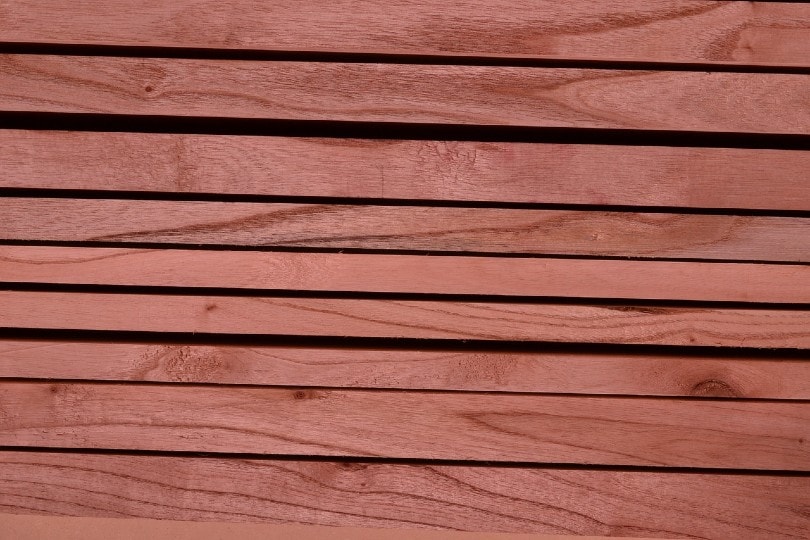
| Genus: | Quercus |
| Common Names: | Red oak |
| Common Uses: | High-value lumber, veneer |
As another native to North America, red oak is found in many of the same places as white oak. In addition, it was introduced into parts of Europe. A distinguishing feature of red oak is its bark, with ridges with stripes in the center. The wood is red-brown and has a coarse grain. As an interior finishing wood, red oak is incredible. It can also be used in furniture building after proper treatment.
5. Padauk

| Genus: | Pterocarpus |
| Common Names: | African padauk, vermillion |
| Common Uses: | Decorative woodworking projects |
Padauk is a stunning wood with a unique orange-red color, when initially cut, that fades to a nice brown after exposure to the sun. It’s valued for its decorative appeal and durability. Because of its unique color, it’s often used in various small woodworking projects, such as cutting boards or charcuterie boards.
6. Ebony
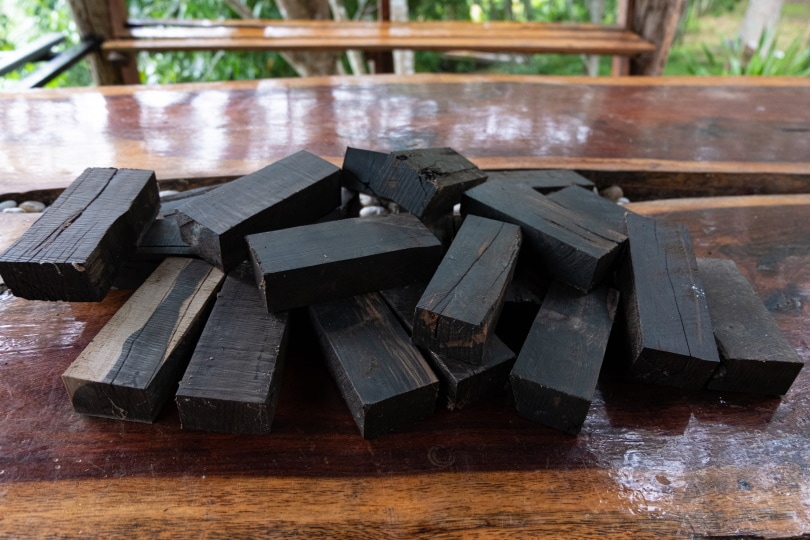
| Genus: | Diospyros |
| Common Names: | Gaboon ebony, African ebony, Nigerian ebony, Cameroon ebony |
| Common Uses: | Small decorative items such as musical instrument parts or carvings |
Ebony is a one-of-a-kind wood named for its black or dark brown color. This gorgeous wood needs no stain to give it character. Sadly, many types of ebony trees are endangered because of unsustainable harvesting. As a result, quantities of this gorgeous wood are limited. Hence its modern use is in small decorative woodworking projects.
7. Makore
| Genus: | Tieghemella |
| Common Names: | Makore, douka, cherry mahogany |
| Common Uses: | Interior/exterior finishing, boat building, cabinets |
Another name for makore is cherry mahogany due to its sometimes pinkish to red-brown color. However, it’s not genuine mahogany. Usually, this wood has a fine, straight grain, but sometimes it features a decorative, wavy appearance in the grain too. This wood is sought after for its excellent durability, making it an excellent choice for exterior finishing and marine applications such as boat building.
8. Mahogany
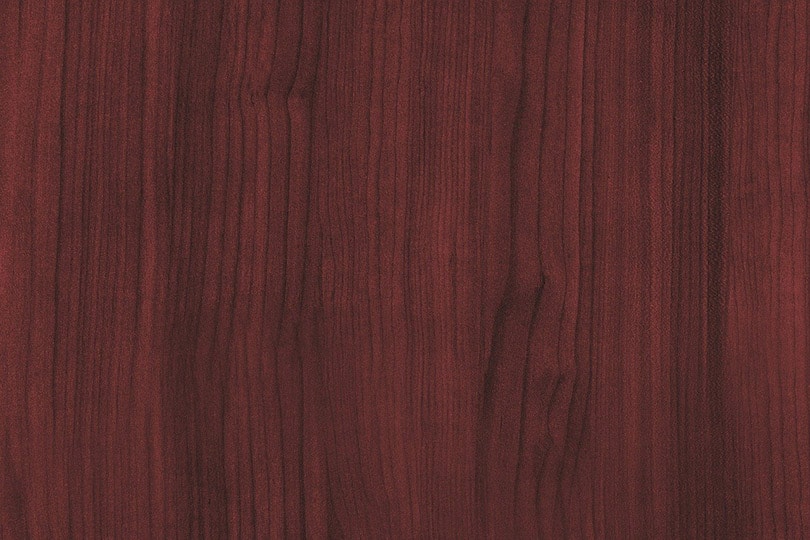
| Genus: | Swietenia |
| Common Names: | Santos mahogany, cabreuva |
| Common Uses: | Decorative woodworking, furniture |
This beautiful red-brown wood has many imitators that have a similar color. But genuine mahogany has a smooth, straight grain and is a widely available hardwood. It is nice to work with and has a beautiful and unique red sheen when polished. This sheen and its durability make it popular for furniture such as chairs and tables. Due to its immense popularity, genuine mahogany is expensive.
9. Acacia

| Genus: | Acacia |
| Common Names: | Mimosa, acacia, thorn tree, wattle |
| Common Uses: | Furniture, ornamental |
This extremely dense wood is one of the hardest hardwoods and, as a result, can be challenging to work with. It is very durable and naturally resistant to water and insects, which makes it good for furniture. Acacia wood ranges from light brown to dark red with wavy, coarse patterns in the grain. Even though it’s challenging to work with, acacia finishes nicely—stained or polished.
10. Sycamore
| Genus: | Platanus |
| Common Names: | American sycamore, western plane, buttonwood |
| Common Uses: | Butcher’s blocks, boxes, crates |
Sycamore wood is similar and can be mistaken for maple, depending on the cut. It’s typically light brown with red streaks and coarse-grained. It isn’t prized for its beauty but has many practical uses, such as crates and pallets. Sometimes the best cuts are used to make inexpensive wooden furniture.
11. Ash
| Genus: | Fraxinus |
| Common Names: | Ash |
| Common Uses: | Tool handles, bows, baseball bats |
Ash does well in applications that require abuse, such as tools and baseball bats. When it comes to looks, it’s similar in appearance to white oak. However, it often has a white striated grain much more pronounced than oak. Most woodworkers would choose oak if given a choice because ash is limited to being used indoors.
12. Balsa
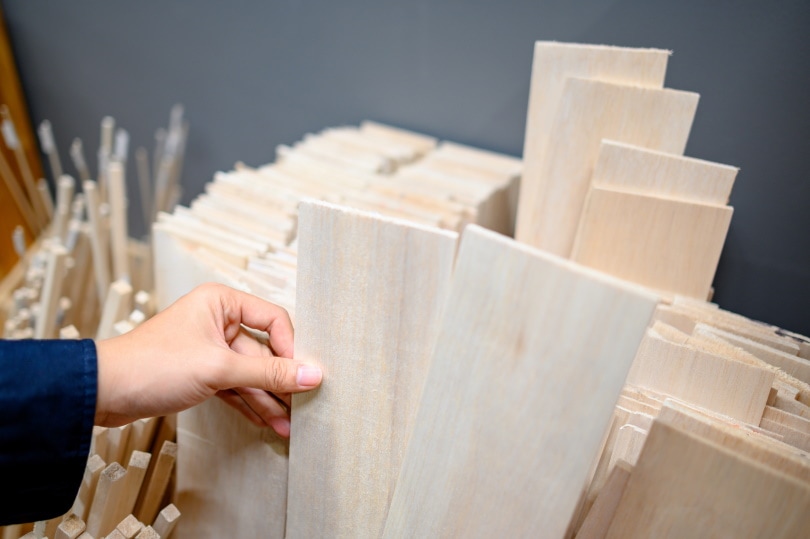
| Genus: | Ochroma |
| Common Names: | Balsa |
| Common Uses: | Whittling, surfboards |
While balsa is one of the softest woods globally, it is still considered a hardwood. Hardwood and softwood classification are decided by the tree’s reproduction, not its density. Due to how soft and easily worked balsa is, it’s popular for whittling or carving. It is also used in surfboards where being light and buoyant is critical. It has a rough, open grain and a light brown color with dark streaks.
13. Beech
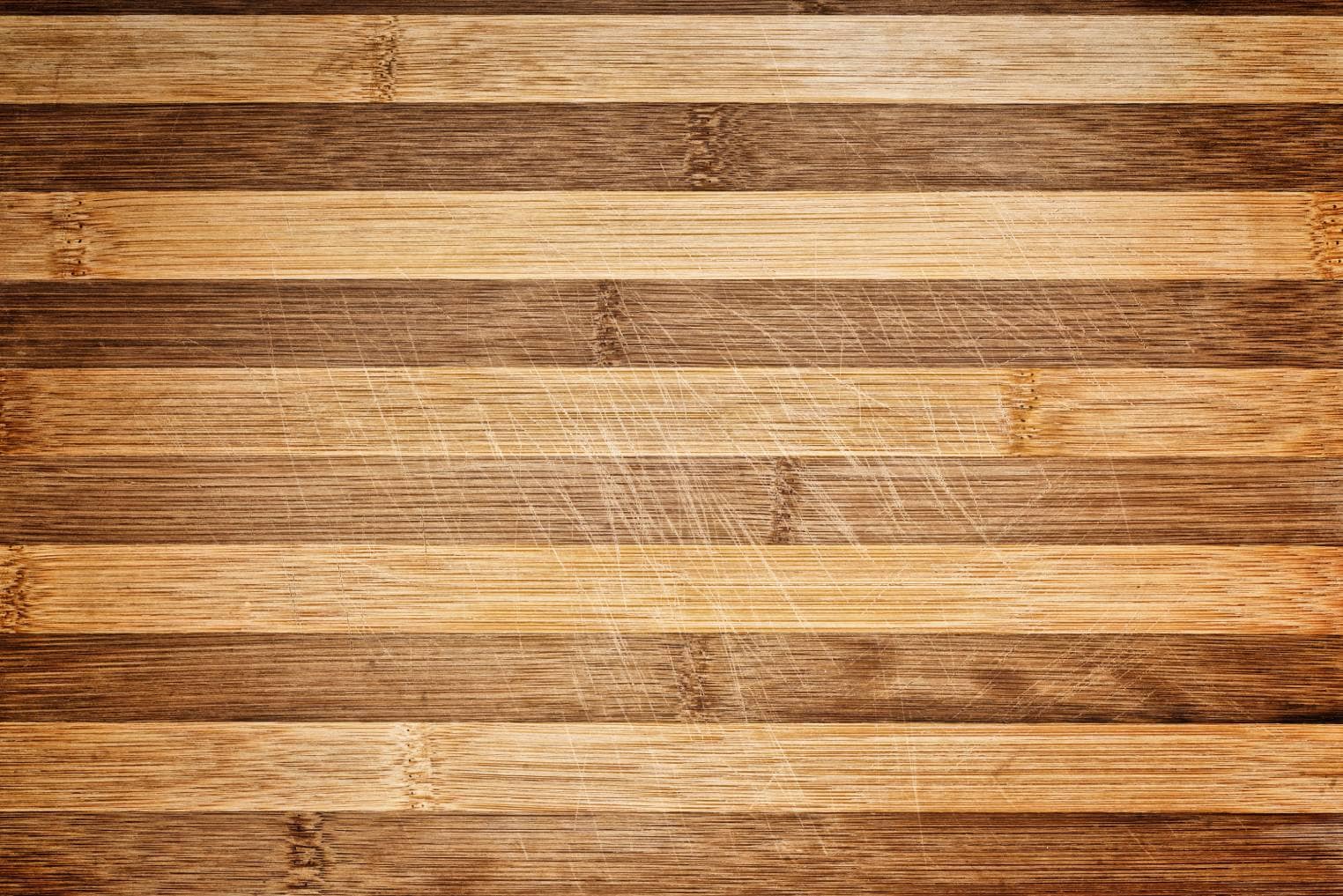
| Genus: | Fagus |
| Common Names: | Beech |
| Common Uses: | Firewood, drums, gun stocks, cabinets |
This reddish-brown wood makes excellent firewood and is also commonly used in meat-smoking applications. It has a straight, fine grain and is easily worked, so it is also popular for woodworking applications. Overall, the different species of beech are all durable. However, they are susceptible to insect damage.
14. Cedar
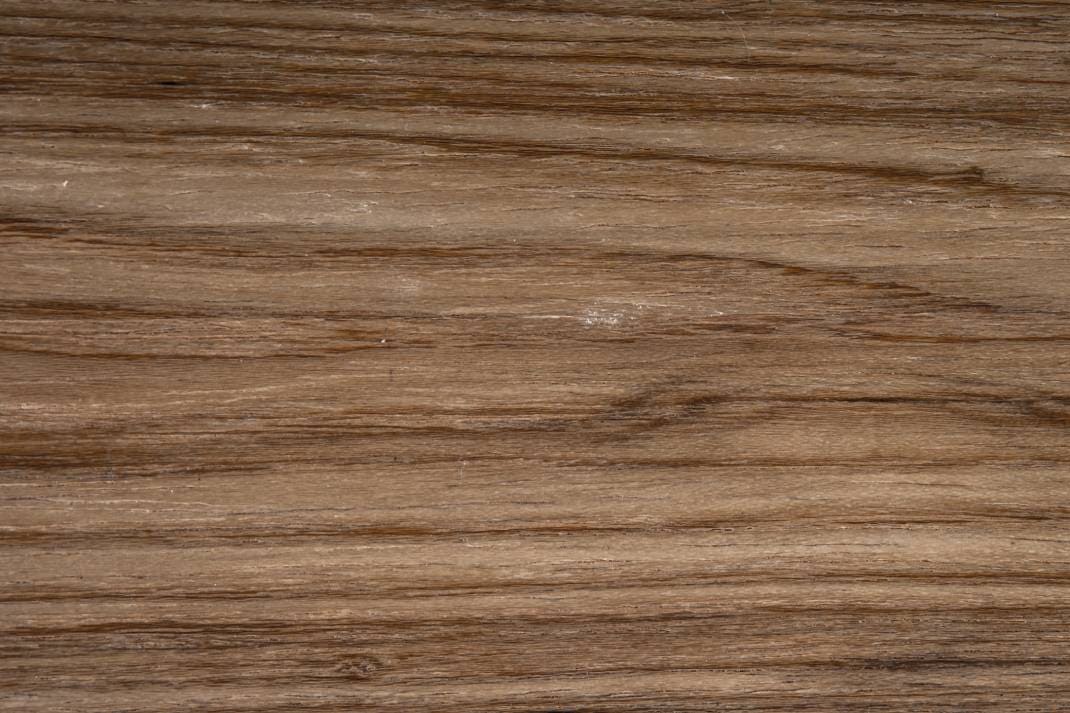
| Genus: | Cedrus |
| Common Names: | Cedar |
| Common Uses: | Outdoor furniture, outdoor finishing, decks |
Cedar is extremely popular due to its natural resistance to water and insect damage. It also finishes nicely and gives off a unique scent that most people immediately recognize. Depending on the species, cedar usually has a deep red or brown color and darkens over time when exposed to the sun.
15. Hard Maple
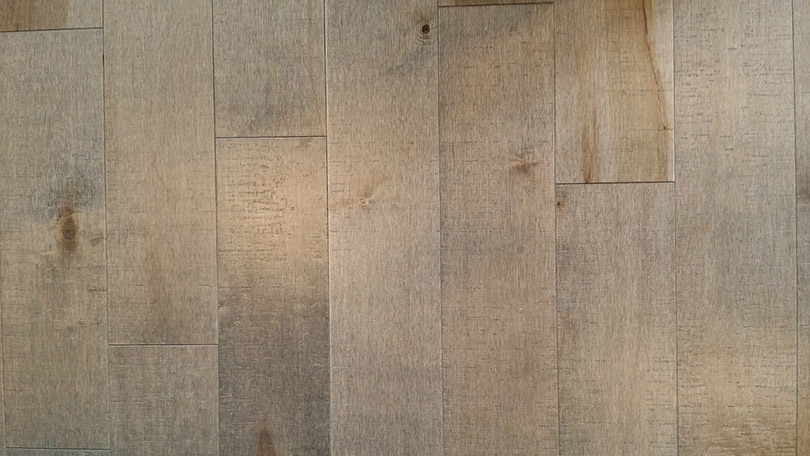
| Genus: | Acer |
| Common Names: | Hard maple, sugar maple |
| Common Uses: | Flooring, furniture, gym floors, cabinets |
Because of its wide availability and incredible durability, hard maple is prevalent in many applications, especially those that see a lot of abuse, such as gym floors. The color of hard maple varies from light to dark red-brown and generally features a fine, straight grain. Another reason that this wood is so popular is that it is easy to work with and it stains well.
16. Anigre
| Genus: | Pouteria |
| Common Names: | Anigre, anegre, aniegre, aningeria |
| Common Uses: | Veneer, plywood, furniture |
An interesting feature of anigre is that some say it smells similar to cedar when freshly cut. Color-wise, it’s usually yellowish-brown and darkens noticeably with age. It’s relatively easy to work with. However, it sometimes contains high levels of silica, which quickly dulls tools. Anigre is often sliced thin and sold as a veneer for furniture and plywood.
17. Spruce

| Genus: | Picea |
| Common Names: | Spruce, whitewood |
| Common Uses: | Building lumber, soundboards for musical instruments, paper |
One of the most common woods used in interior construction is spruce, and it’s also widely used in paper manufacturing. It doesn’t vary in color much; it’s typically yellowish-white with a fine, straight grain. Due to being relatively soft and plain in appearance, spruce isn’t commonly used in anything where it’s the focal point.
18. Birch
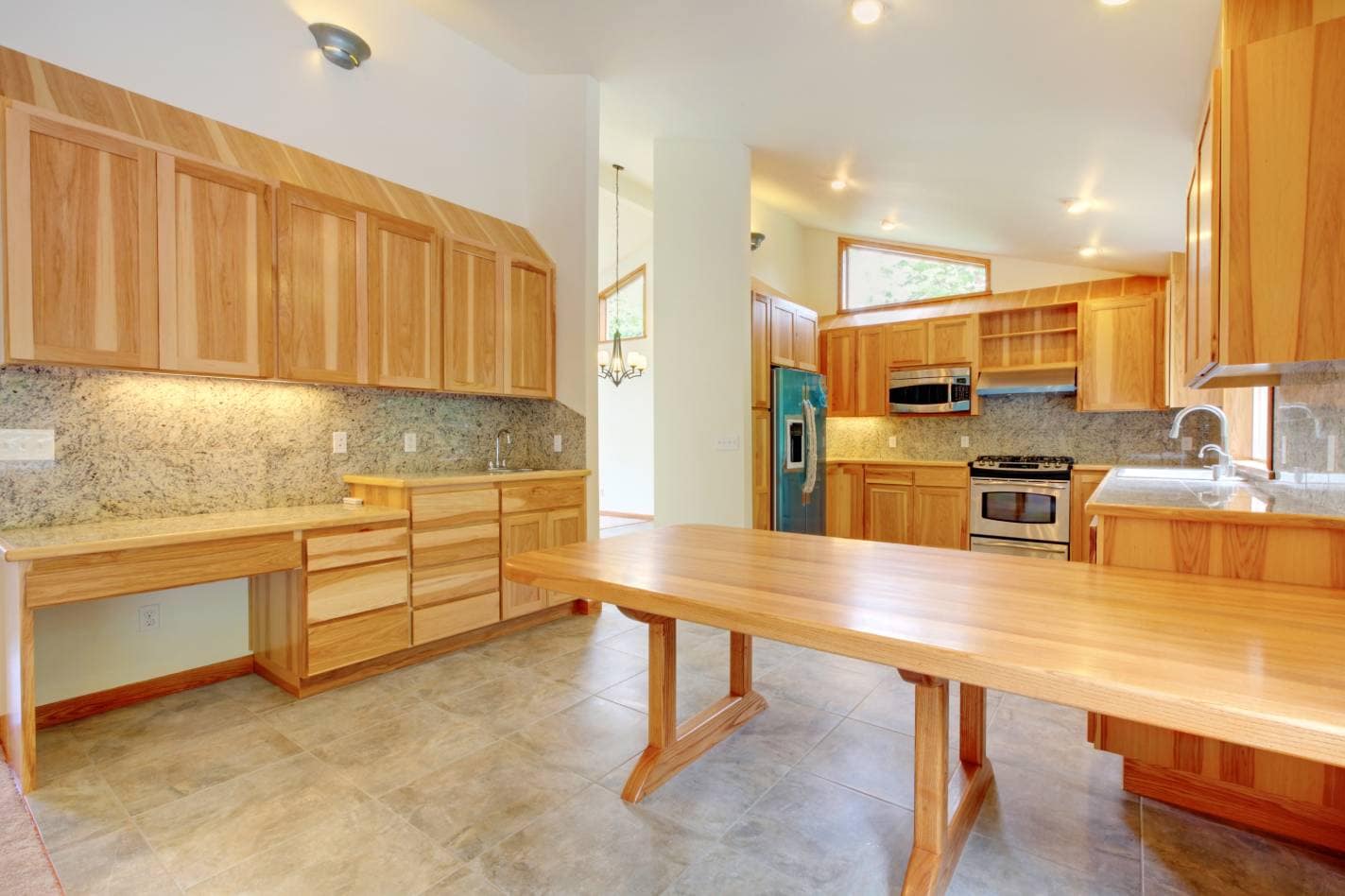
| Genus: | Betula |
| Common Names: | Yellow birch, white birch, black birch, northern birch |
| Common Uses: | Toothpicks, plywood, shelving |
There are many varieties of birch, such as yellow birch, northern birch, and bog birch. One of the most common variations we see used by woodworkers is yellow birch. It is generally pale white to yellow with some reddish-brown variations and has a fine, straight grain. However, some cuts showcase a more wavy or curly grain.
19. Pine
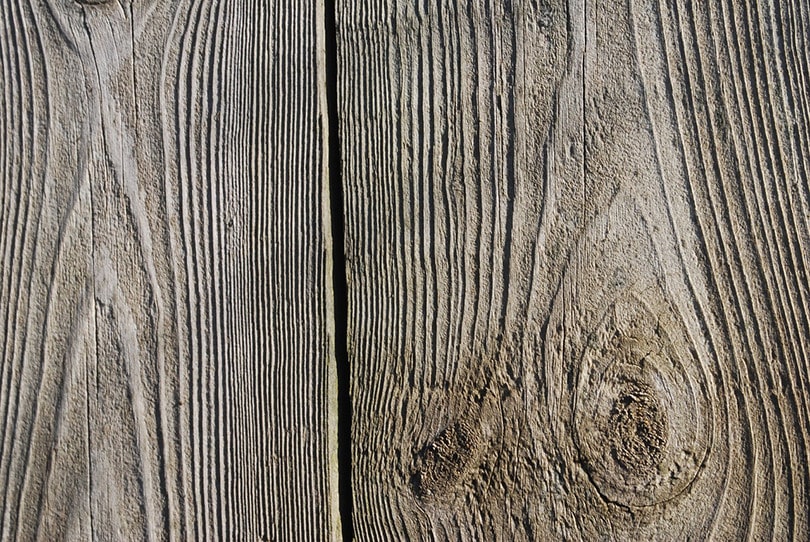
| Genus: | Pinus |
| Common Names: | Pine, sugar pine, Christmas tree |
| Common Uses: | Construction, paper |
Pine is the silent warrior of construction and paper, and in North America, its uses are often underappreciated. It is widely used in many construction applications, such as residential homes or shops. Its pulp is also commonly used to make paper. Generally, pine is light brown to yellow and features a wavy, coarse grain. It is not a particularly nice-looking wood, but it makes for reliable structural lumber.
20. Cherry

| Genus: | Prunus |
| Common Names: | Black cherry, Brazilian cherry, sweet cherry |
| Common Uses: | Furniture, cabinets, flooring |
Cherry is highly sought-after for its incredible natural beauty. It is popular in furniture and flooring, where a high-end, elegant finish is desired. It typically has a pink to a rich reddish-brown color and a fine wavy or curly grain. Like many other types of wood, cherry’s color will darken and deepen over time.
21. Elm

| Genus: | Ulmus |
| Common Names: | American Elm, elm |
| Common Uses: | Furniture, boxes, paper |
The elm is native to North America and Western Europe. It is commonly used in indoor furniture, and almost every elm species are used heavily in paper manufacturing. Generally, it has a light to medium reddish-brown color, but depending on the part of the tree, it can also be more of a pale white. The grain pattern is usually finely woven and smooth.
22. Greenheart
| Genus: | Chlorocardium |
| Common Names: | Greenheart, cogwood, bibiru |
| Common Uses: | Marine applications, construction |
Due to its incredible durability and natural resistance to water, greenheart is often used in marine construction applications. However, it is hard to work with, so special tools are needed, and as a result, it’s not prevalent everywhere. It has a unique pale green color, dark streaks, and a straight, interlocked grain.
23. Bamboo
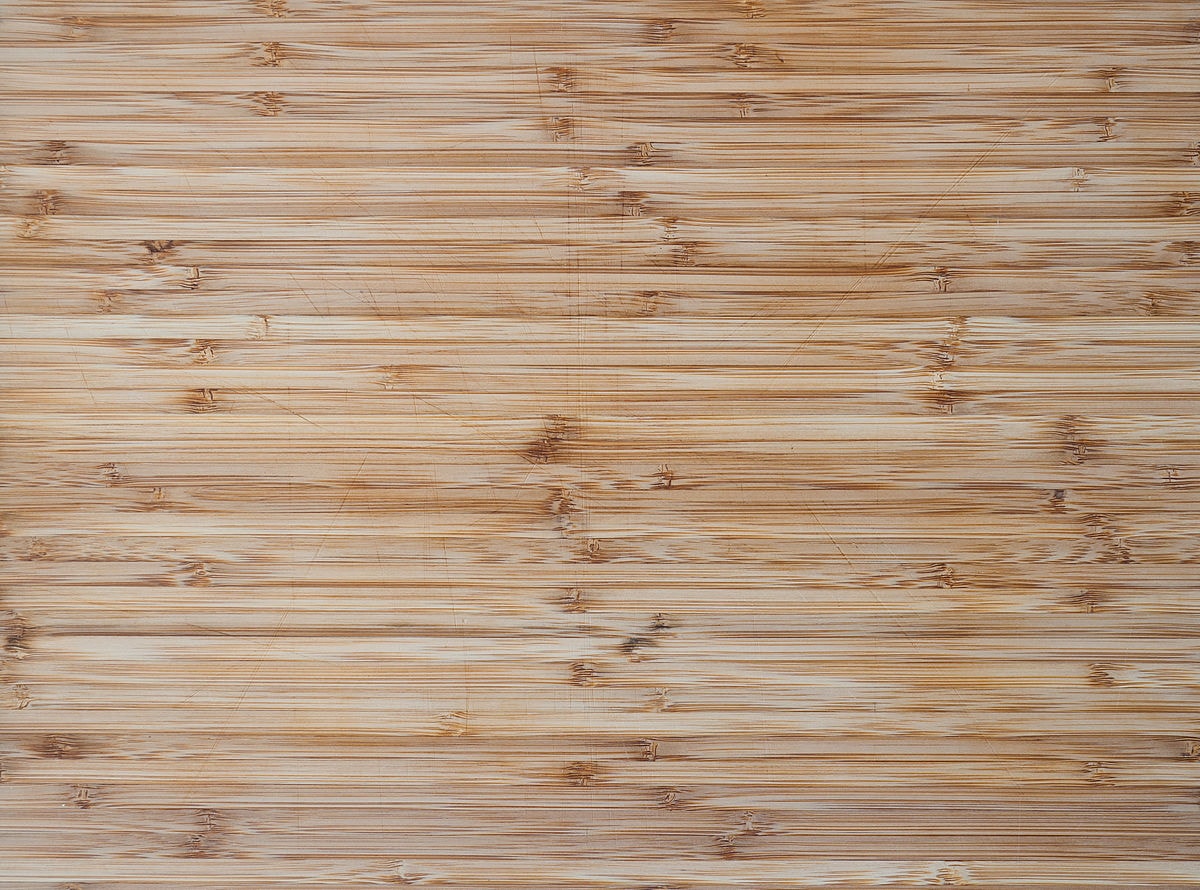
| Genus: | Poaceae |
| Common Names: | Bamboo |
| Common Uses: | Cutting boards, tables, flooring |
Bamboo goes through much more production to turn it into usable boards. If left natural, it is usually a pale yellow color. Some manufacturers will add color to make the boards darker. Bamboo is becoming quite popular because of how fast it grows and its sustainable harvesting.
24. Bubinga
| Genus: | Guibourtia |
| Common Names: | Bubinga, kevazingo |
| Common Uses: | Veneer, cabinetry, furniture |
It may have a funny name, but that doesn’t stop this imported African hardwood from being any less popular. Typically, bubinga has a straight, interlocked grain that is fine to medium textured. Its color can range from pinkish-red to brown. Because it is so similar to rosewood, it is often used in its place since it is a cheaper option.
25. Hickory
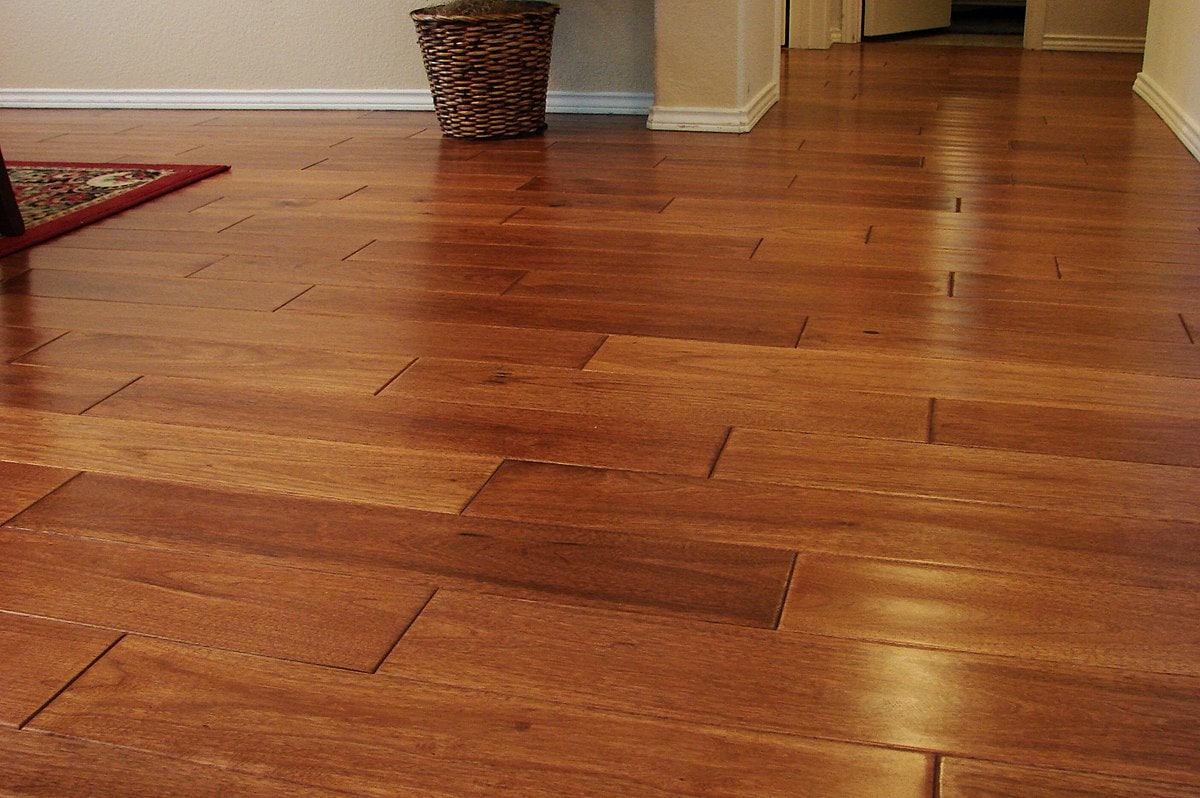
| Genus: | Carya |
| Common Names: | Hickory |
| Common Uses: | Tool handles, wheel spokes, flooring, cooking |
Usually, hickory has a straight, medium grain; its color is typically light brown, sometimes with reddish tints. It’s not a particularly nice-looking wood, but sometimes it is used in woodworking. However, it is tough and dense, which lends itself to practical uses where durability is beneficial. Another common use is meat smoking due to the unique flavor it adds.
26. Eastern Hemlock
| Genus: | Tsuga |
| Common Names: | Eastern hemlock, Canadian hemlock |
| Common Uses: | Construction, pallets, crates |
Due to its abundant supply, eastern hemlock is a primary choice for construction lumber in North America. It is similar in its appearance to pine but a little more reddish-brown. It’s rarely used in any application where it’s the star, but it makes good structural lumber. However, as a tree, the Eastern Hemlock has ornamental value.
27. Zebrawood
| Genus: | Brazzavillensis |
| Common Names: | Zebrawood, Zebrano |
| Common Uses: | Veneer, boatbuilding, furniture |
Possibly one of the most unique-looking woods on this list is zebrawood. It is generally a light brown color, but it is characterized by dark brown or black streaks reminiscent of zebra stripes. It is typically pricey but not as high-priced as ebony or rosewood. It is a very durable hardwood, so it is suitable for many applications and prized for its unique pattern.
Conclusion
This list is far from comprehensive. There are hundreds of species of wood on this planet, and even within many of the woods listed, there are numerous variations. Working in a cabinet shop, I’ve come across some interesting pieces that don’t quite fit any species. It truly takes a trained eye to distinguish wood grain patterns accurately.
Featured Image Credit: Dimmo, Shutterstock
Contents


